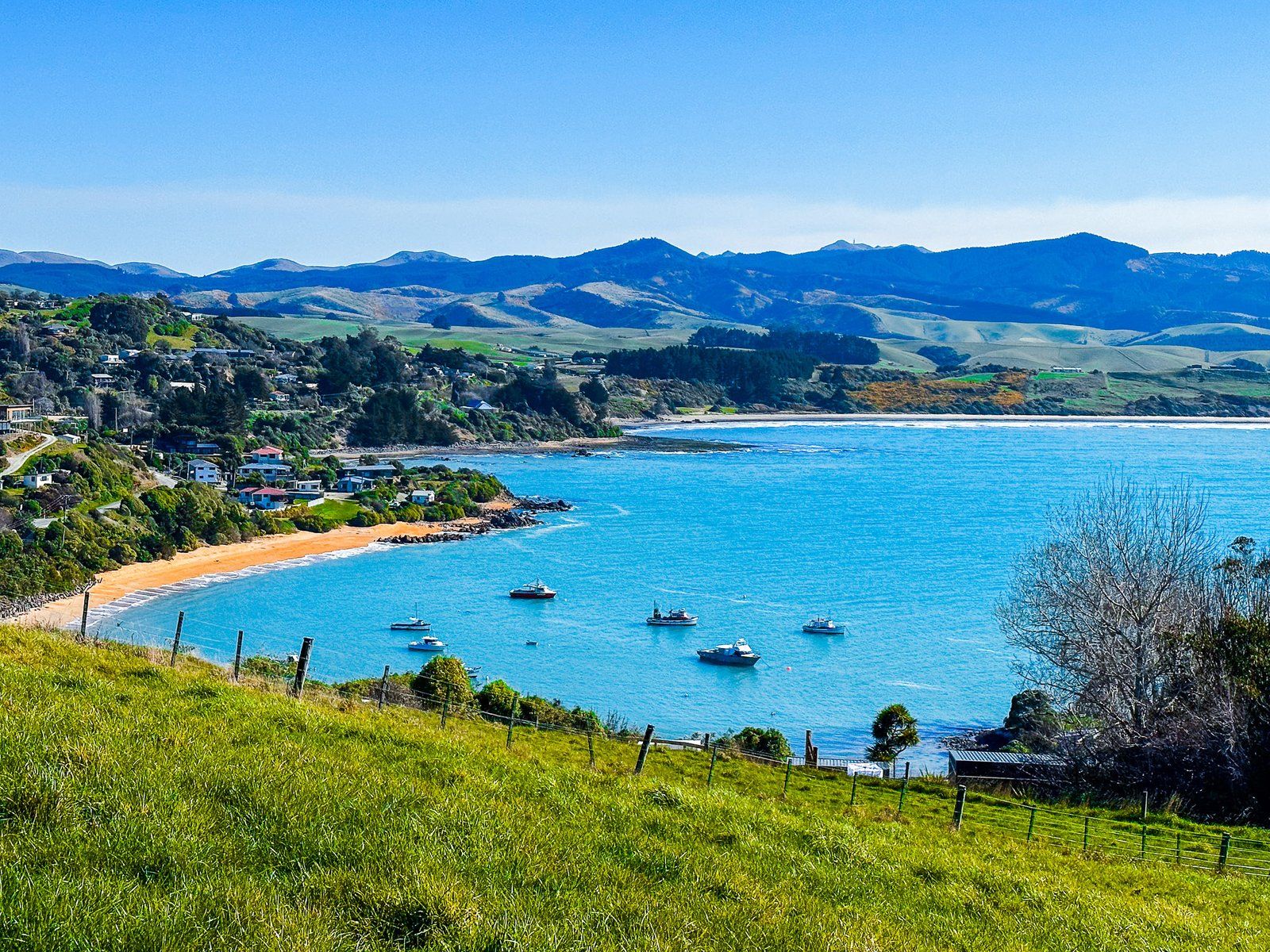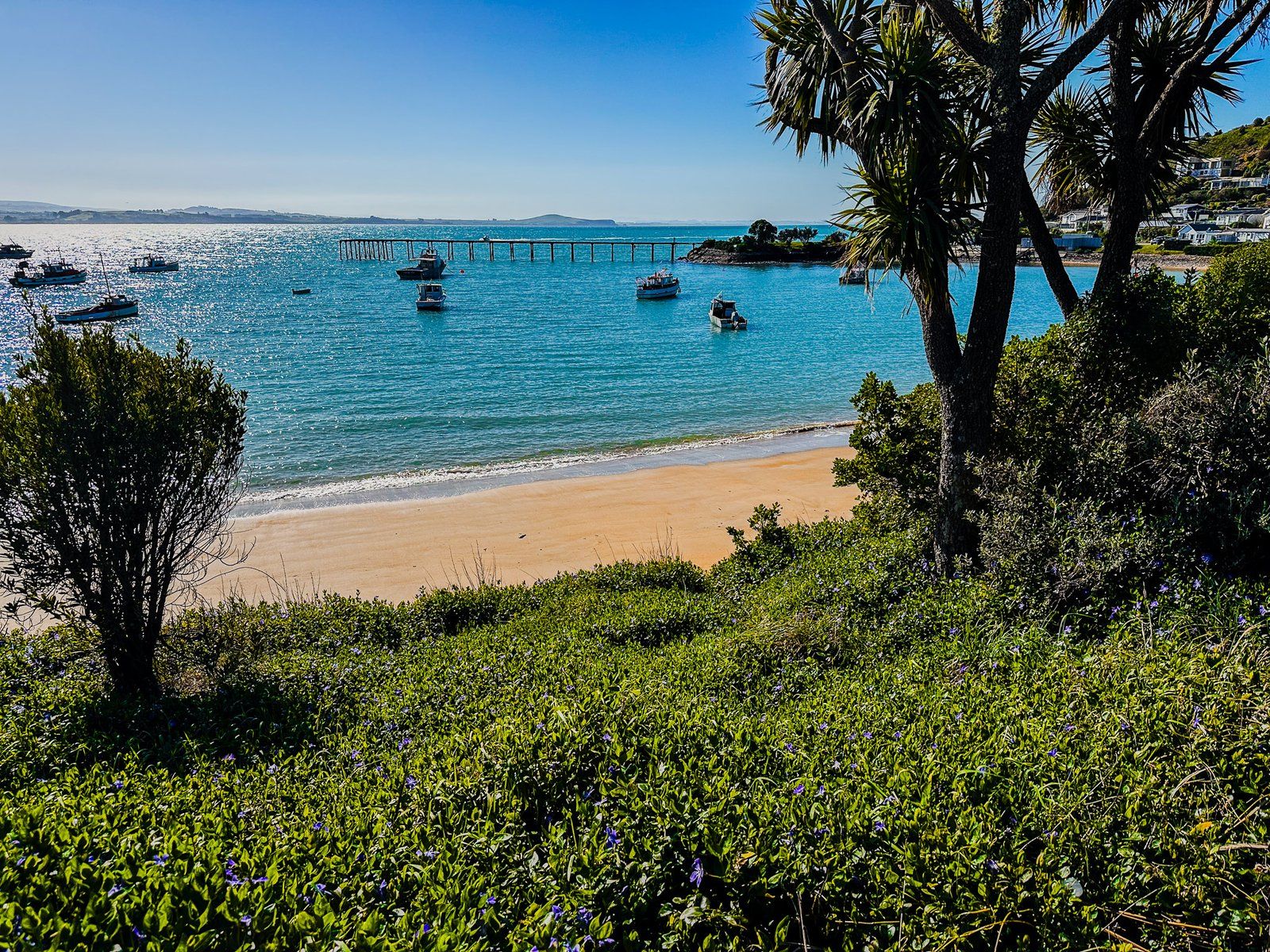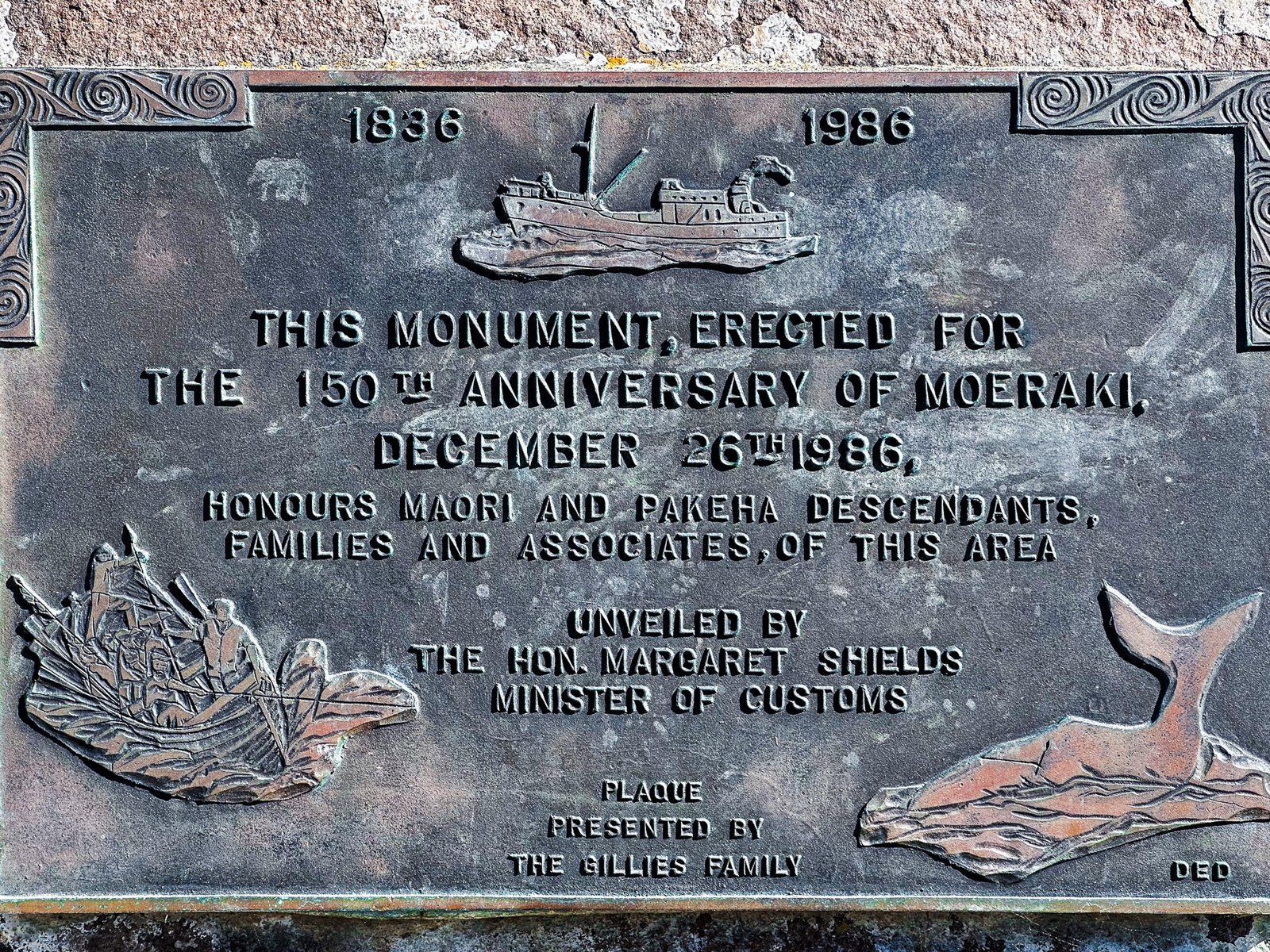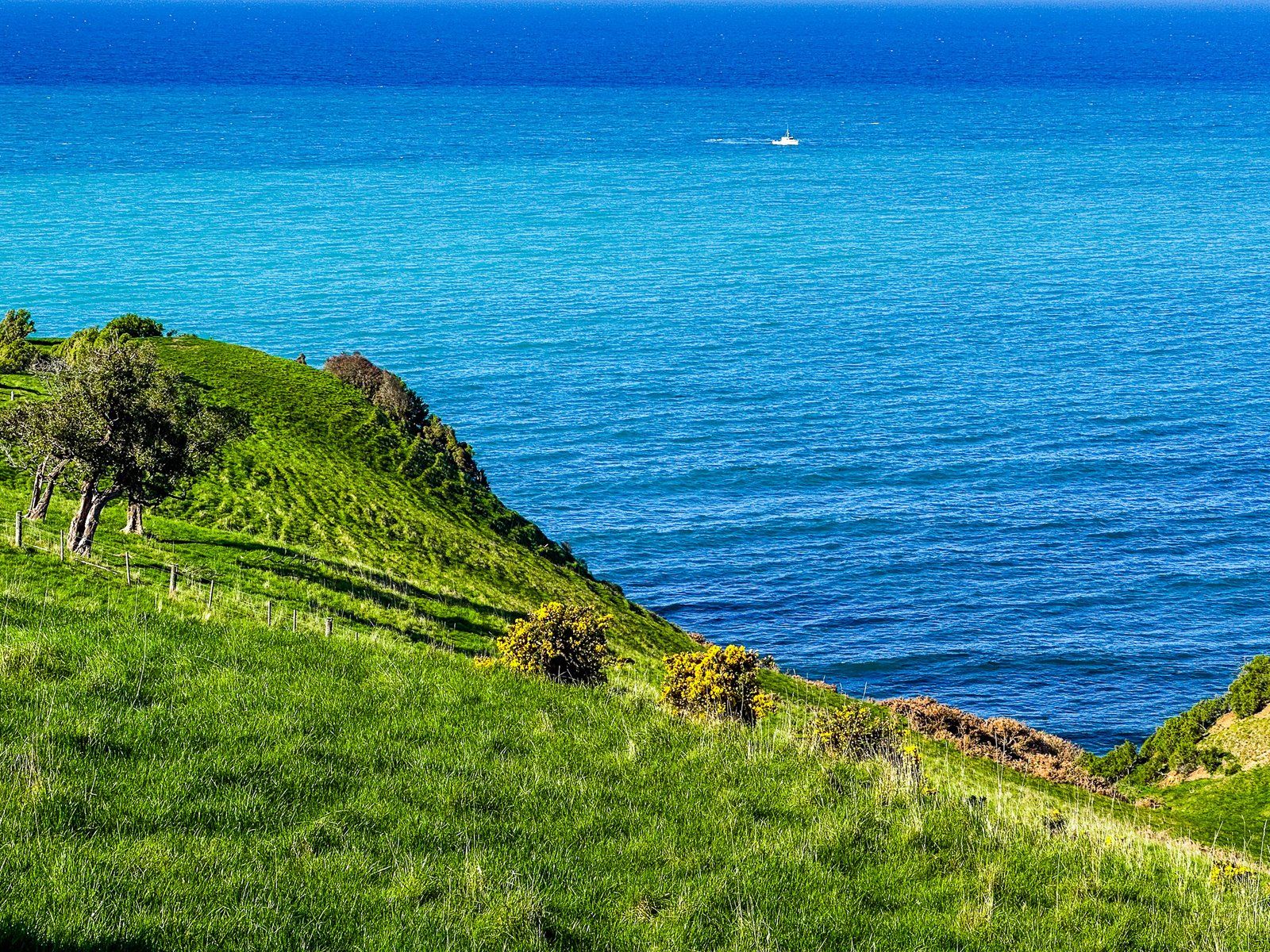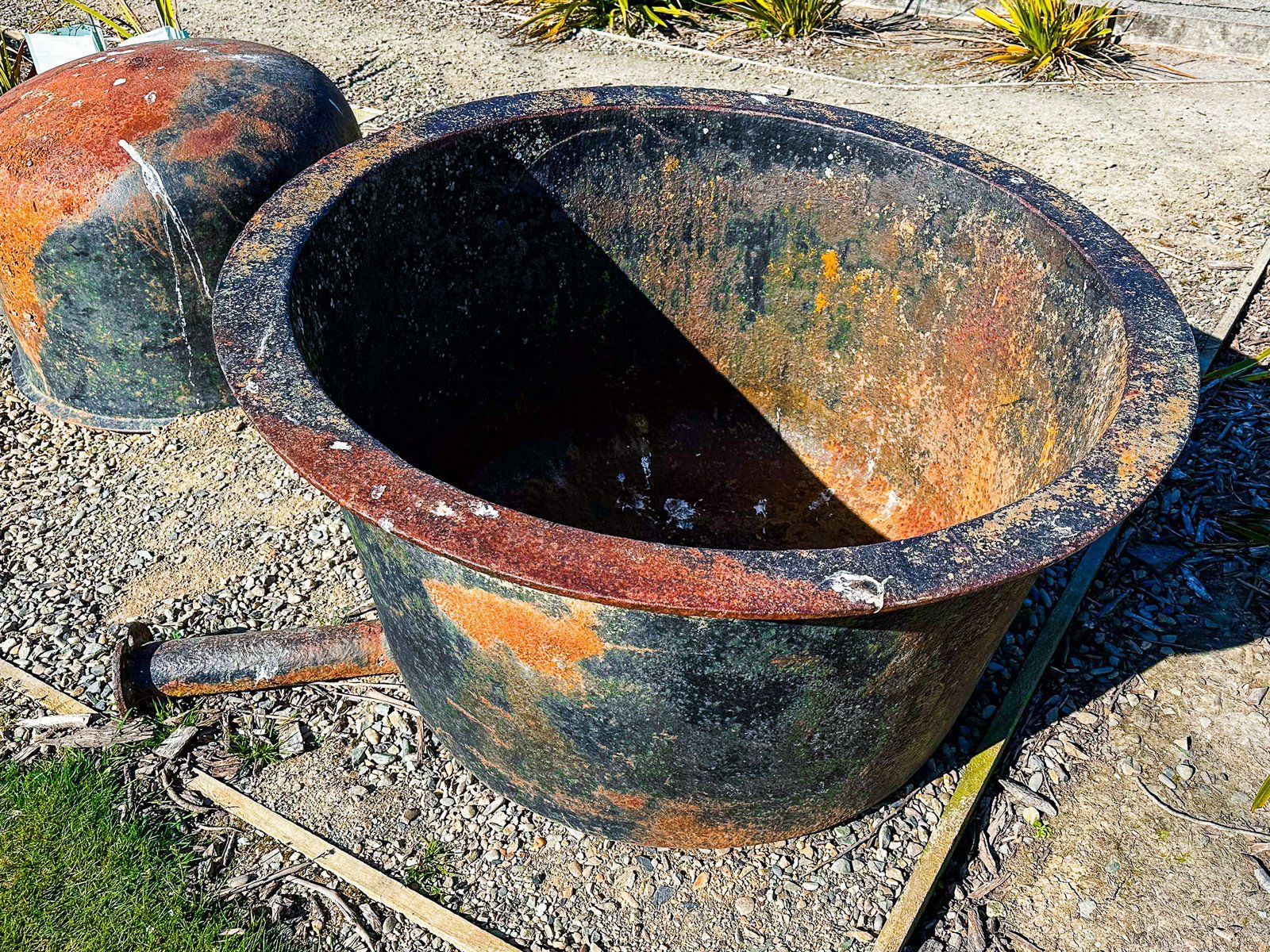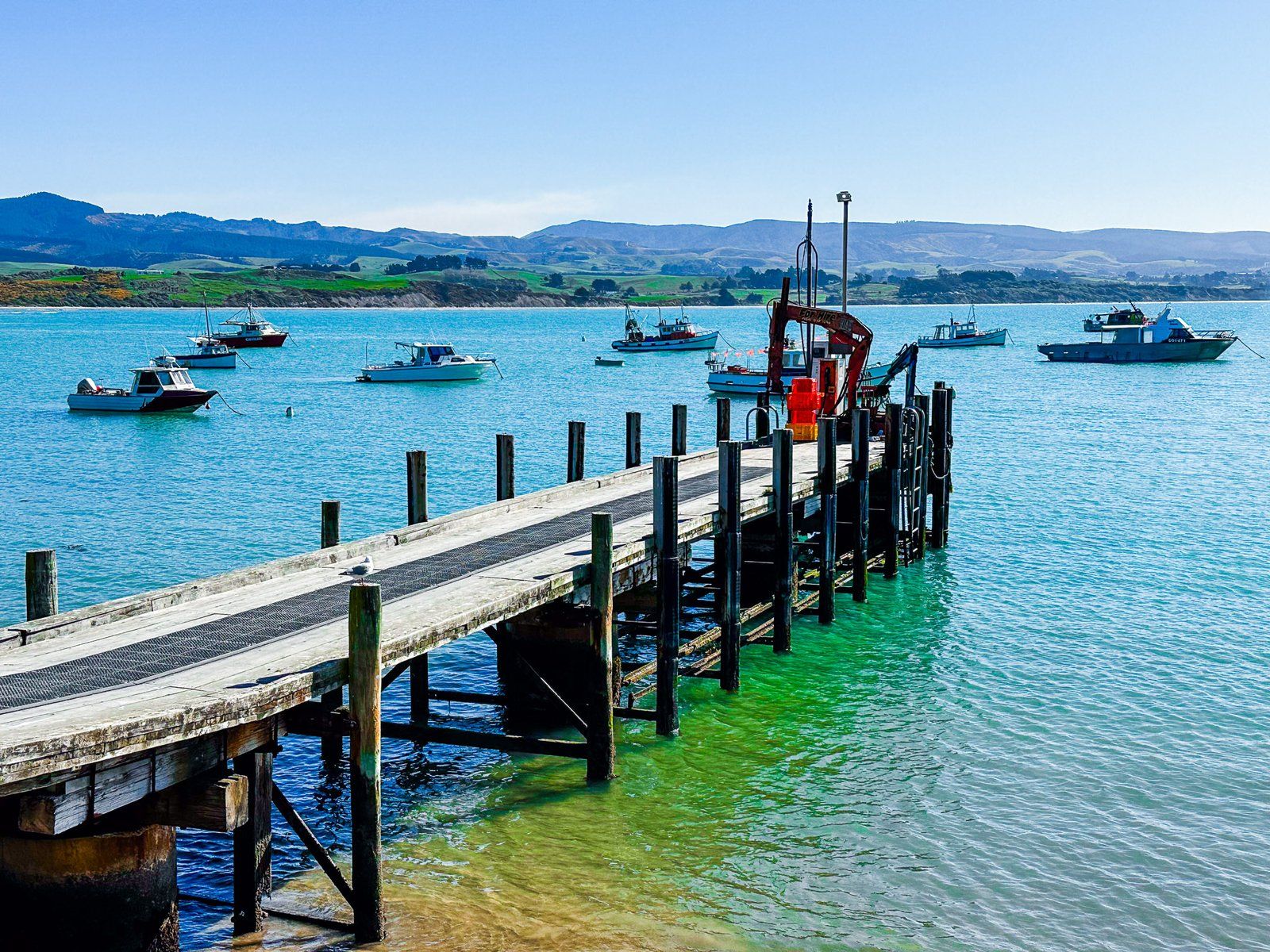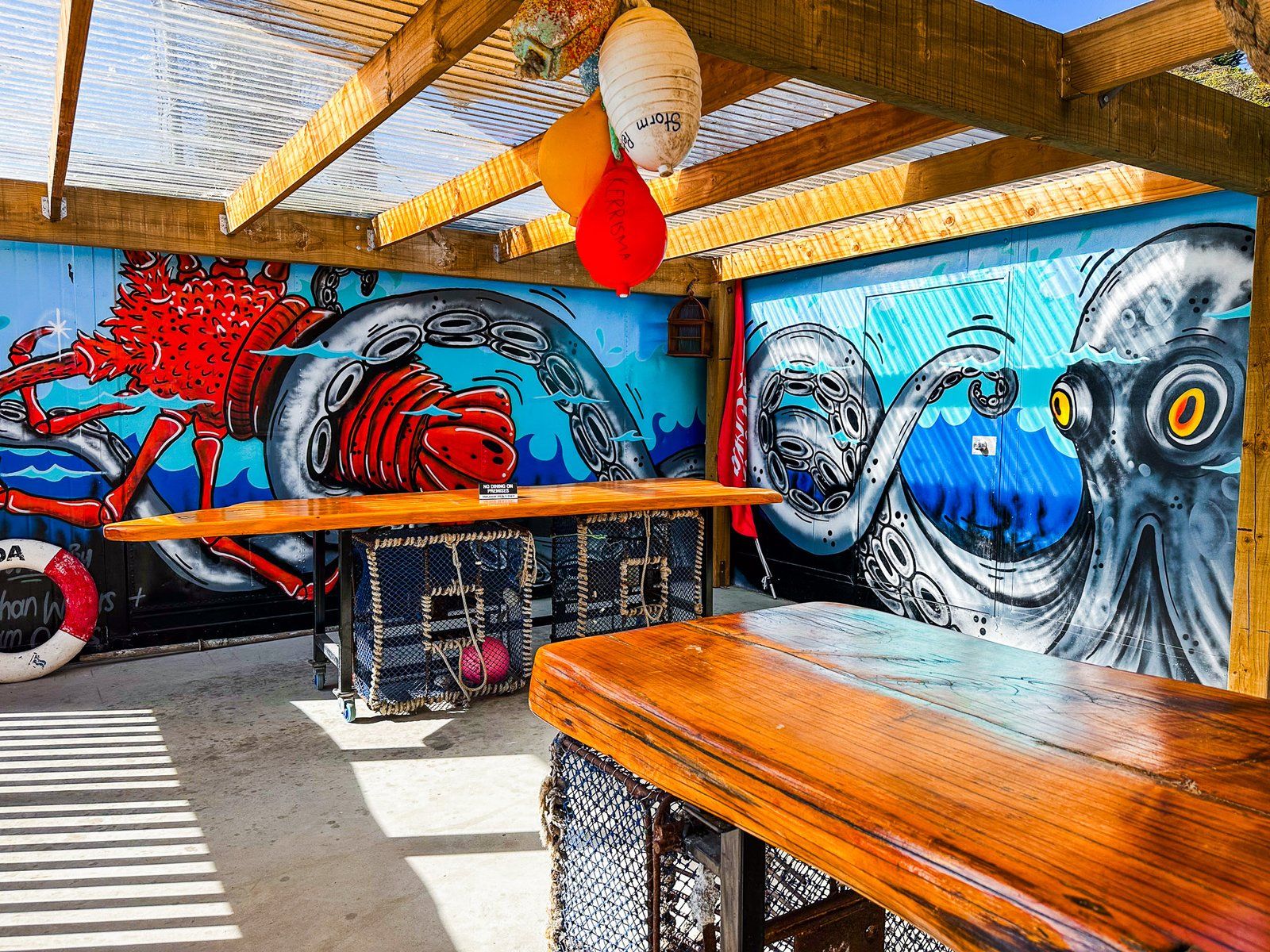Moeraki is a small village on the North Otago Coast, at the north end of Moeraki Peninsula, and two km south of the Boulders. The Point shelters the town and an attractive north-facing beach and harbour. Despite its tiny size, the town has a fascinating history and is the gateway to stunning Kātiki Point along Lighthouse Road to the south. It is also a top spot for waterfront fish and chips and coffee.
Moeraki translates as “a place to sleep by day”, and Māori have been present in the area hunting moa as early as the 1300s. The area around Kātiki Point had a large established pā in the 1700s. Sealing brought Europeans to the coast by the early 1800s. One of the first recorded interactions between locals and sealers was during the so-called War of the Shirt, a bizarre series of violent tit-for-tat encounters on the Otago coast from 1810 to 1821. By the time the “war” ended, the seals had been largely hunted to extinction anyway.
More significant was the establishment of a whaling station in 1836 by John Hughs and a party of five other Europeans and six Māori. The whales only lasted for a few years, but it led to the town comprising Pākeha (Europeans) and Māori from the outset. There is a monument to this at the reserve and park above the beach, and you can drive (or take a steep walk) up to the whale viewpoint on the top of Moeraki Point.
In the 1870s, there was an attempt to develop a major port to service North Otago, and a railway siding was built. However, this proved unrealistic, with landslips posing a significant risk, and the hoped-for traffic instead went to Ōamaru. However, the port and town did develop as an important fishing village with a fish processing plant. Today, there are still one or two boats, and you can get fresh fish and lobster meals at the Moeraki Tavern and The Fishwife, a harbourfront outdoor cafe. They’ll even lend you a water gun to scare away the insistent seagulls!
